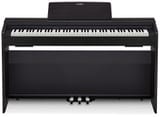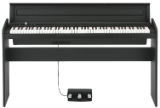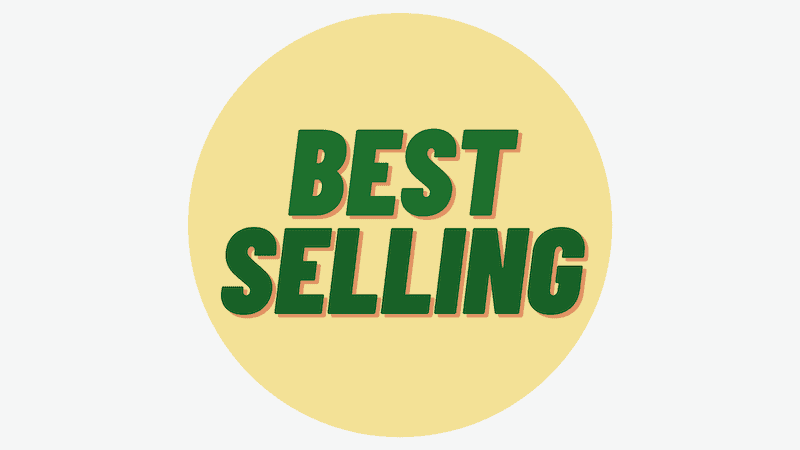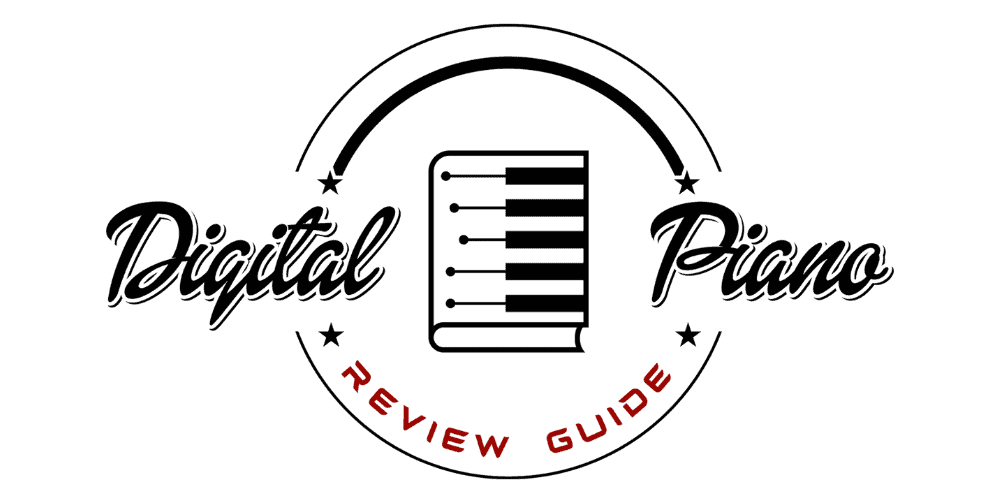Yamaha P-115 vs Yamaha P-125: Should You Upgrade?

The Yamaha P-115 has been one of the best digital pianos for beginners on the market for a long time. It’s not a flashy digital piano by any means—heck, it doesn’t even have an LCD screen.
It’s simplicity at its finest, but with a GHS (Graded Hammer Standard) keyboard, touch velocity sensitivity (Hard/Medium/Soft/Fixed), and good sound, this portable digital piano is a great choice for beginners and even gigging musicians that want an inexpensive (about $500) piano that can be carried from one location to the next with ease.
But now comes the Yamaha P-125, a digital piano on the surface that is meant to succeed the P-115—but doesn’t look remarkably different from the P-115.
After all, a lot remains the same. The P-125 doesn’t have an LCD screen. The action (GHS) remains the same, and even the weight of these two digital pianos are identical (roughly 26 lbs).
So, does that mean the Yamaha P-125 isn’t worth the upgrade? Well, let’s not get ahead of ourselves here.
Before we move on, to better help you, please take a look at our interactive guide below, which will allow you to easily compare the Yamaha P-115 against not only the Yamaha P-125, but other popular digital pianos on the market.
| Photo | Model |
|---|---|
| Casio PX-S1100 | |
| Alesis Prestige Artist | |
| Casio CDP-S360 | |
| Yamaha P-515 | |
 | Casio PX-870 |
 | Korg LP-180 |
 | Casio PX-770 |
Yamaha P-115 vs Yamaha P-125
The first thing I want to talk about when it comes to these two pianos is how technology comes into play. We live in a highly digital world, where we are always looking at our phones or tablets, so it’s great to see that with both the Yamaha P-115 and the Yamaha P-125, you can place your phone or tablet onto the Music Rest, attach a USB cable from your phone or tablet to the USB to Host input of the piano, and you’re able to control many of the digital piano’s function’s via your mobile technology.

So how does this work? Well, let’s dive deeper into this.
First, you can use either an iPhone or iPad with your Yamaha P-115 or Yamaha P-125. When you do this, the iPhone or iPad essentially acts as your LCD screen, allowing you to change voices, rhythms, record songs, and save your favorite tracks.
It’s really a fantastic feature, and much needed in this day in age. This is a major benefit to buying a digital piano in the first place, because aside from never needing a tuneup, your digital piano can engage with all forms of technology, allowing for a more helpful and fulfilling playing experience.
The bad news here is that, if you have Android technology (like a Samsung phone or tablet, for instance), you’re unfortunately not going to be able to connect your mobile technology to the P-115 or P-125.

And below, please take a moment to view some of the best-selling digital pianos currently on sale online:
| BEST SELLERS |
|---|
| 1) Yamaha P-515 |
| 2) Casio PX-S3100 |
| 3) Casio PX-870 |
| 4) Roland FP-E50 |
| 5) Roland FP-30X |
Mobile Technology and Yamaha Pianos
Although both the Yamaha P-115 and P-125 can connect to an iPhone or iPad, it’s not exactly an “apples to apples” comparison.
If you buy the Yamaha P-115, you will end up using an app called the Digital Piano Controller app. If you purchase the Yamaha P-125, you’ll use what’s called the Smart Pianist app.
Now, on the surface, they do very similar things. At the click of a button, you can activate Dual Mode (which allows you to essentially play two sounds at once), alter the Reverb Type or Reverb Depth, turn on the Split function (you can play, for example, a Wood Bass with your left hand and a Pipe Organ in with your right), Metronome (make sure you’re always on tempo—excellent for beginners), and much more.
By contrast, the Smart Pianist App, which is what you’d use if you purchase the Yamaha P-125 specifically, has a really cool feature called Chord Chart. And what this does is it essentially analyzes songs that are already in your iPhone or iPad’s music library, and it immediately begins displaying the music’s chord symbols.
So, this allows you to instantly be able to play along with your favorite songs while your songs are playing. In my opinion, this feature is very much like a pianist’s version of the Shazam app. But instead of the app analyzing the song that’s playing on the radio and instantly telling you the song’s name or artist name or album title, the Smart Pianist app instantly displays the proper music chords for the song it analyzed.
Now, before you get too giddy about this feature, it’s not going to work for absolutely every single song your mind could conjure. Yamaha’s website even says that it does an admirable job of analyzing tens of thousands of songs—not millions. In fact, songs that are “harmonically complex” are not necessarily the best choice for the Chord Chart analysis feature.
But, there’s no reason to feel down about this. Yamaha actually gives you a small sample of songs that are great for this feature. If you happen to like songs that are similar in vein to Ed Sheeran’s “Thinking Out Loud” or John Lennon’s “Imagine” or Elton John’s “Candle in the Wind” or Willie Nelson’s “Always on My Mind,” then you’ll definitely be in luck when it comes to using Chord Chart.
Better Sound from the Yamaha P-125?
Let’s dig into sound a little bit now. Now, both the Yamaha P-115 and the Yamaha P-125 utilize the Pure CF Sound Engine for Tone Generation. This includes the great sound of the Yamaha CFIII 9’ concert grand piano.

But that’s not the only aspect that matters when it comes to sound.
The P-115 featured a tweeter position that had been better improved by being more in line with the ears of the player. This made the music that was played on the P-115 feel a bit more lively and expressive compared to previously models.
The Yamaha P-125 expands on this improvement in sound. Here, Yamaha has included a newly improved 2-way speaker system that allows the sound to be produced in both upward and downward directions.
The result you’ll notice, especially in comparison to the Yamaha P-115, is a sound that is much more rich and lush. The stereo sound comes alive, and while you certainly won’t mistake a $500 digital piano for an acoustic piano, its sound is the best it has been in this particular price range when it comes to Yamaha’s “P” series.
Is the Yamaha P-125 Worth the Upgrade?
So, we finally get to the key question some of you likely have: If I already own the Yamaha P-115, should I upgrade to the Yamaha P-125?
Well, just to be clear, I think that if you don’t own either of these digital pianos, you’ll be extremely satisfied with what the Yamaha P-125 bring to the table. Especially if you’re a beginner and you’d love the prospect of being able to play your favorite song from today or yesteryear.
But, I think if you already own the Yamaha P-115, and you’re happy with that digital piano, you don’t need to be in a rush to get the P-125. That’s not a knock on the P-125—it’s a excellent affordable digital piano. But, $500 is nothing to sneeze at, either.
I think that if the Yamaha P-115 offered no ability to control functions on your digital piano via an iPhone or iPad app, I’d say get the Yamaha P-125. On top of that, I think that if the Yamaha P-125’s ability to integrate with the Smart Pianist App allowed you the ability to use this app with your Android devices, that alone might be enough reason to make the jump to the P-125.
But, since neither option is available, and because many other aspects of the digital pianos remain the same (same action, same polyphony count, same weight), you can feel satisfied in holding off your upgrade to a later date.
Yes, the P-125 does come with a higher number of voices (24 to the P-115’s 14) and improved sound quality (which is certainly worth noting), but if money is a big factor for you, and if you’re already happy with the P-115, it would probably be a good decision to stick with the P-115 a little longer.
However, if you’re new to the world of digital pianos, or you just think the P-125 would be a great fit for your needs, you can’t go wrong with this affordable and very portable digital piano by Yamaha.
- You can read my full review of the Yamaha P-125 here.
If you enjoyed this article, we’d love for you to “like” our Digital Piano Review Guide Facebook page!
You May Also Want To Read:







5